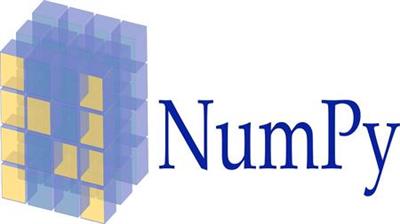NumPy Library
Duration: 3h23m | .MP4 1280x720, 30 fps(r) | AAC, 44100 Hz, 2ch | 1.23 GB
Genre: eLearning | Language: English
The Ultimate NumPy Tutorial for Data Science Beginners
What you'll learn
You will understand that NumPy - Numerical Python is used for scientific computing and data analysis
You will get clarity that NumPy uses n-dimensional, homogenous object (ndarray)
NumPy are fast, use less memory, are convenient and use vectorized code (Code does not contain explicit looping and indexing etc)
You will learn how to create array's in NumPy
You will clearly understand the comparison between NumPy and standard python
You will learn the structure of Arrays
Indexing, Subsetting, Slicing and Iterating through Arrays
Execution speed in NumPy and Standard Python Lists
NumPy Arrays - Few Operations
Basic mathematical operations/linear algebra operations/functions
Playing with arrays using resize, reshape & stack creation
Requirements
Basic experience with the Python programming language
Strong knowledge of data types (strings, integers, floating points, booleans) etc
Description
The Ultimate NumPy Tutorial for Data Science Beginners:
What is the NumPy library in Python?
NumPy stands for Numerical Python and is one of the most useful scientific libraries in Python programming. It provides support for large multidimensional array objects and various tools to work with them. Various other libraries like Pandas, MatDescriptionlib, and Scikit-learn are built on top of this amazing library.
Python Lists vs NumPy Arrays - What's the Difference?
If you're familiar with Python, you might be wondering why use NumPy arrays when we already have Python lists? After all, these Python lists act as an array that can store elements of various types. This is a perfectly valid question and the answer to this is hidden in the way Python stores an object in memory.
A Python object is actually a pointer to a memory location that stores all the details about the object, like bytes and the value. Although this extra information is what makes Python a dynamically typed language, it also comes at a cost which becomes apparent when storing a large collection of objects, like in an array.
Python lists are essentially an array of pointers, each pointing to a location that contains the information related to the element. This adds a lot of overhead in terms of memory and computation. And most of this information is rendered redundant when all the objects stored in the list are of the same type!
To overcome this problem, we use NumPy arrays that contain only homogeneous elements, i.e. elements having the same data type. This makes it more efficient at storing and manipulating the array. This difference becomes apparent when the array has a large number of elements, say thousands or millions. Also, with NumPy arrays, you can perform element-wise operations, something which is not possible using Python lists!
This is the reason why NumPy arrays are preferred over Python lists when performing mathematical operations on a large amount of data.
Summary:
In short - NumPy is one of the most fundamental libraries in Python and perhaps the most useful of them all. NumPy handles large datasets effectively and efficiently. As a data scientist or as an aspiring data science professional, we need to have a solid grasp on NumPy and how it works in Python.
In this course, we will start off by describing what the NumPy library is and why you should prefer it over the ubiquitous but cumbersome Python lists. Then, we will cover some of the most basic NumPy operations that will get you hooked on to this awesome library!
Who this course is for:
Data analysts and business analysts
Excel users looking to learn a more powerful software for data analysis
Download link:Kod:rapidgator_net: https://rapidgator.net/file/19759672192d70358684727dd3803045/oyzrb.NumPy.Library.rar.html nitroflare_com: https://nitroflare.com/view/1C59AB0CC1CC12A/oyzrb.NumPy.Library.rarLinks are Interchangeable - No Password - Single Extraction
1 sonuçtan 1 ile 1 arası
Konu: NumPy Library
-
01.12.2020 #1Üye



- Üyelik tarihi
- 20.08.2016
- Mesajlar
- 144.947
- Konular
- 0
- Bölümü
- Bilgisayar
- Cinsiyet
- Kadın
- Tecrübe Puanı
- 153
NumPy Library
Konu Bilgileri
Users Browsing this Thread
Şu an 1 kullanıcı var. (0 üye ve 1 konuk)



 LinkBack URL
LinkBack URL About LinkBacks
About LinkBacks





 Alıntı
Alıntı
Konuyu Favori Sayfanıza Ekleyin